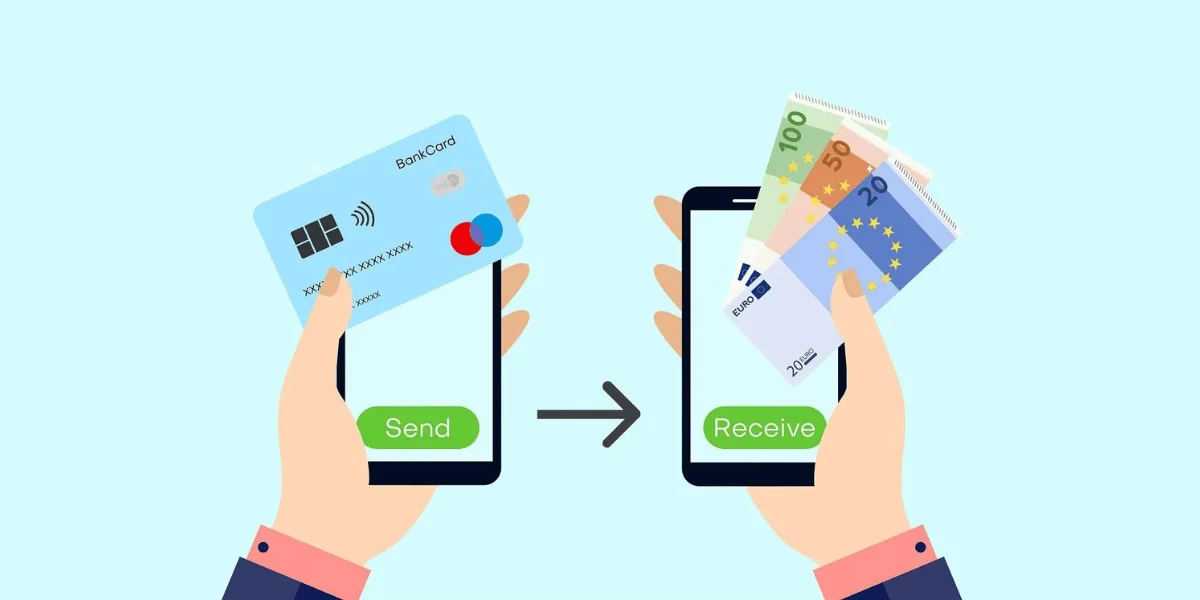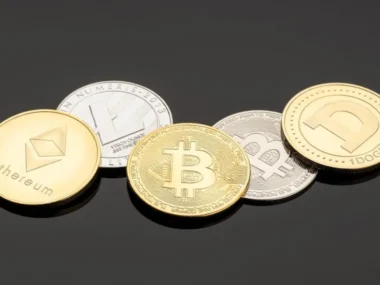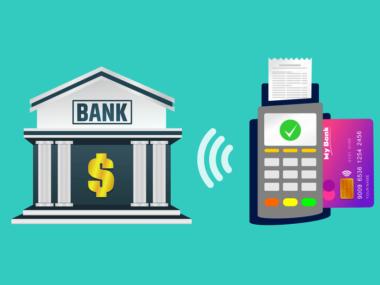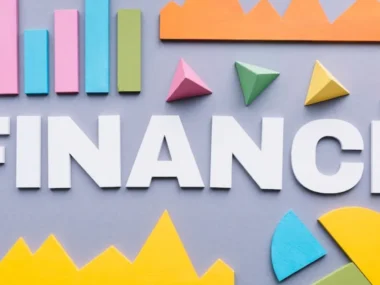Table of Contents
Branchless Banking

Platforms, Advantages, and Definition
Advancements in the financial world have continued to emerge over the years, with one of the greatest developments being branchless banking. In today’s writing, the focus will be on branchless banks, which means getting to know their branchless banking platforms, the definition, and the pros and cons.
It can be described as a modern approach to conducting banking operations without the need for physical branch outlets. While computer banking, or direct banking, operates without an office presence, it can also include components such as ATMs, banking outlets, and mobile operations. This model of idea or system enhances flexibility, adapts to various economic conditions, and integrates both online and physical services, thereby improving financial inclusion and service delivery.
Branchless banking is one of the delivery channels whereby customers transact all their banking services and products by using an IT platform without necessarily accessing a physical branch. It mainly focuses on online services such as mobile, online, and ATM services to provide benefits to users requiring quicker, more diverse forms of banking. This branchless banking definition captures the essence of modern banking, focusing on accessibility and convenience.
Objectives
Branchless banking focuses on several key objectives that redefine how banking services are delivered and accessed:
- Enhancing Financial Accessibility and Inclusion: It aims to provide banking services to individuals with no access to traditional banking facilities or those with limited access. By eliminating the need for customers to visit physical branches, it extends banking services to remote areas and individuals who cannot regularly visit a branch, thus boosting financial inclusion.
- Reducing Operational Costs: The limited branch network associated with branchless banking significantly lowers operational costs for financial institutions. This enables them to offer more reasonable prices and lower fees, making banking more affordable for consumers.
- Improving Customer Convenience: It ensures that banking services are available around the clock through various platforms, including mobile apps, internet banking, ATMs, and agency banking. This aligns with current consumption patterns, providing users with access to banking services whenever and wherever needed.
- Expanding Service Offerings: It allows financial institutions to reach a broader customer base and offer a wider range of services. From basic transactions like deposits and withdrawals to more complex products such as credit and investment services, digital platforms enable faster deployment and scaling of new services.
Understanding Branchless Banks

The Financial institutions that have no physical offices, typically found in various locations within a country. These banks are aligned with online banking solutions, mobile applications, and digital payment tools. Interest in branchless banks has increased because they help cut costs, thereby reducing charges for customers.
Platforms: How do they work?

A branchless banking platform is the technological backbone that users rely on to access banking services through the internet or smart device applications. These platforms feature robust security measures, simplicity in usage, and a variety of services, including money transfers, bill payments, and even loan applications.
Historical Evolution of across the World

It has evolved significantly over time, driven by technological advancements and the changing needs of various regions. Initially, branchless banking began with telebanking and simple electronic services, gradually expanding to include a substantial number of digital and physical service points.
The history can be traced back to innovations in banking practices in the late 20th century. For example, in 1989, First Direct in the United Kingdom introduced telephone banking services, marking a shift from traditional banking methods by offering financial services via phone. The commercialization of the internet in the early 1990s further accelerated this evolution, exemplified by the creation of Security First Network Bank in the United States in 1995—a completely online bank.
The most dramatic changes occurred in the late 1990s and early 2000s with the advent of advanced digital banking tools. The introduction of mobile applications and online portals allowed for the delivery of multiple services without the need for physical branches. Additionally, Know Your Customer (KYC) and authentication processes, including biometric verification systems, were adopted to enhance security in branchless banking.
Importance and Limitations

With all the advancements introduced, branchless banking has both benefits and drawbacks. Let’s explore these in detail:
Advantages:
- Convenience: One of the biggest selling points of branchless banking is its flexibility. Since it is not tied to any physical location, users can perform transactions anytime and anywhere without visiting a branch.
- Lower Fees: This criteria do not operate out of fixed buildings, which reduces overhead costs and allows them to offer lower fees to customers.
- Expanded Access: It brings banking services to rural and hard-to-reach areas, increasing financial literacy and inclusion.
- Faster Transactions: This model offers quicker transaction times, making branchless banking platforms user-friendly and efficient.
Disadvantages:
- Limited Personal Interaction: Although these platforms offer many services, they lack the face-to-face interaction available in traditional banking, which some customers may prefer.
- Technical Barriers: Some users, particularly older generations, may struggle with the technology required to use these services.
- Security Concerns: Like any digital service, branchless banking faces risks such as data breaches and fraud, making security a critical concern.
Branchless Banking vs. Traditional Banking

The key differences between branchless banking and traditional banking include ease of access, cost, and services. Traditional banks offer in-branch services with direct interaction, while branchless banks provide a cost-effective alternative. For customers seeking lower fees and more convenience, branchless banking is often the superior choice.
Choosing the Right Banking Platform
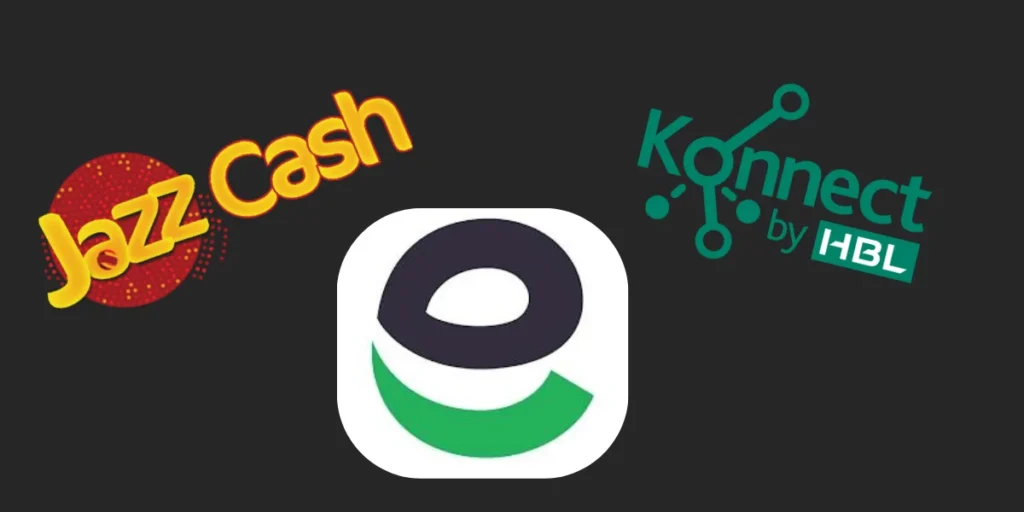
Selecting the most suitable branchless banking platform depends on individual needs. Key considerations include usability, safety, and the range of services offered. For instance, services are ideal for those seeking convenient and accessible ways to manage their finances, particularly in rural areas where traditional banking services are limited.
Revolutionizing the Banking Industry

The advent of the branchless banking system has significantly transformed the banking industry. By eliminating the need for physical branch infrastructure, branchless banks have extended financial services to underserved populations, especially in the developing world. The focus on digital solutions has reduced operational costs and enabled banks to pass these savings on to their clients.
Security In Protecting Your Data

While branchless banking offers numerous benefits, security remains a crucial concern. It is important to ensure that the branchless banking platforms you use implement robust encryption and authentication measures to protect your financial data from unauthorized access. For example, services that emphasize security, requiring users to follow best practices to safeguard their information.
Global Branchless Banking Adoption Examples

The adoption of branchless banking varies by region, influenced by economic and technological development. Here are some notable examples:
- Pakistan: In Pakistan, it has been exemplified by solutions such as Easypaisa, JazzCash, and HBL. These services use mobile technology and extensive agent networks to provide innovative banking models. Notable offerings include WhatsApp banking, mobile POS enablement, and Pakistan’s first Islamic banking facility. These solutions deliver basic banking services in areas with minimal conventional banking presence, serving as vital financial resources in underserved regions.
- India: The Aadhaar Enabled Payment System (AePS) in India leverages biometric authentication linked to the Aadhaar identity system to facilitate banking transactions. This system has significantly boosted financial literacy by expanding access to banking services, especially in rural areas where traditional banking infrastructure is limited.
- Africa: Branchless banking has seen rapid adoption in Africa, driven by high mobile phone usage. Countries like Kenya have embraced mobile banking services such as M-Pesa, providing banking access across diverse and remote locations.
- UAE: In the UAE, branchless banking combines electronic banking products accessible via computers or cell phones with physical banking services like ATMs and banking agents. This approach caters to a diverse population and supports basic transactions as well as additional financial services.
As countries integrate branchless banking into their financial networks, it continues to enhance financial inclusion, reduce costs, and improve service provision. Branchless banking represents a growing trend in the global financial structure, evolving to meet technological advancements and consumer needs.
Branchless Banking Agent Networks

Agent networks are now commonly associated with branchless banking, serving as a critical component in the branchless banking setup. They function as the last-mile for service delivery to customers and are responsible for managing cash and liquidity within the ecosystem. Additionally, agents report to a team of customer service and support and act as the interface between financial institutions or telcos and customers.
Major Considerations for Establishing a Branchless Banking Agent Network
- Building and Fostering Connections: Developing a robust network requires generating and maintaining connections.
- Cash and Liquidity Management: Motivating agents is essential for effective cash and liquidity management.
- Cost and Revenue Model: Establishing the right cost and revenue model is crucial for the benefit of clients, agents, telcos, and banks.
- Training and Education: Agents should be trained and educated to create a homogeneous network.
- Compliance and Controls: Effective management of controls and compliance is necessary to meet banking standards.
Telco Distribution Networks
Telco distribution networks are among the largest globally. In Pakistan:
- Over 1,400 Franchisees: Extensive reach across the country.
- Over 200,000 Retailers: Numerous touchpoints processing high-quality customer service and compliance with SOPs.
- Funds Transfer Services: Provides cash and liquid asset management services with Mobilink.
Mobilink’s Distribution Network
Mobilink operates the largest retail network in Pakistan, offering:
- Widespread Retail Business Access: Investment supports nearly 500 franchise outlets.
- Extensive Retail Outlets: More than 200,000 retail outlets nationwide.
- High Transaction Volume: Processes over Rs. 600 million in mobile-to-mobile balance transfers monthly.
- Customer Service: Provides level-1 service assistance.
- 24/7 Live Support: Constant connectivity to Mobilink headquarters.
Employment of Women in Agent Networks

In the evolving landscape of branchless banking, addressing gender disparity is crucial for maximizing financial inclusion and accessibility. The draft policy titled “Banking on Equality” emphasizes the importance of gender balance in banking access points. According to the “Proposed Policy to Minimize the Level of Gender Gap in Financial Inclusion: Empirical Proposal (2020)” submitted to the State Bank of Pakistan (SBP), there is a strong case for ensuring that branchless banking agent networks reflect gender diversity.
Key Findings and Policy Implications:
- Preference for Female Agents: Research conducted by the SBP on branchless banking revealed that women often prefer interacting with female agents rather than male ones. This preference is linked to a greater comfort level and reduced unease in engaging with female representatives, particularly in contexts where social or cultural factors may influence their interactions.
- Enhanced Financial Product Awareness: The study also highlighted that women customers are more likely to be informed about and acquire additional financial products when interacting with female clerks. This suggests that gender-balanced representation among branchless banking agents can lead to increased financial literacy and product uptake among women.
- Increasing Access for Rural and Poor Women: To accelerate the adoption of digital financial services, especially among rural and economically disadvantaged women, it is essential to enhance female representation in both bank branches and branchless banking agent networks. Ensuring gender balance among agents will help address the specific needs of female clients and foster a more inclusive financial environment.
Finding the Right Model for Branchless Banking

Agent Network Perspective: Bank-Led Model
- Bank Facilities: The bank maintains its own branches, ATMs, and POS facilities in a given area.
- Third-Party Distribution Network: The bank utilizes a third-party distribution network to extend its reach.
- Partnership with Telcos: Establishing a relationship with telecommunications companies (Telcos) is crucial for accessing their agent databases.
Telco-Led Model: Ara’s Focus
The Telco-led model, emphasized by Ara, highlights the essential steps and processes necessary for success in the telecommunications sector. This model helps organizations navigate the challenges and leverage the strengths of the telcos in branchless banking.
Mobile Money and Agent Networks
Mobile money has been globally successful, largely driven by telecommunications companies (Telcos) due to the following reasons:
- Telco Expertise: Telcos have in-depth knowledge of agent networks and strong affiliations with these networks.
- Market Understanding: Telcos possess a deep understanding of mass-market customer requirements and have the capability to develop appropriate products and services.
The Future of Branchless Banking

Branchless banking refers to providing financial services through technological advancements without the need for physical branches. The trend of branchless banking is expected to continue growing as more people seek the convenience and flexibility it offers. With ongoing technological advancements and the development of more branchless banking platforms like e sahulat, these services are likely to replace traditional banking in many areas, offering improved banking tools to meet evolving customer needs.
Branchless banking is poised for a promising future, driven by innovation and evolving consumer habits. As more financial institutions and regulators adapt, several factors and advancements are expected to shape the branchless banking landscape in the coming years.
Technological Innovations
Much of the evolution will be powered by technological innovations, leading to new enhancements in service delivery.
Key Innovations:
- Artificial Intelligence (AI) and Machine Learning: AI will enable customers to receive banking products and services tailored to their behavior. Machine learning will also enhance fraud detection, reducing transaction risks and improving overall security in branchless banking.
- Blockchain Technology: In financial operations, blockchain technology will improve the security and quality of transactions. Its structure helps minimize fraud and enhances the reliability and efficiency of cross-border payments, benefiting branchless banking services.
- Biometrics: Mobile biometric authentication, such as fingerprint and facial recognition, will become more prevalent. This technology will tighten security for customer identities and transactions, especially in regions with high rates of identity theft. It will also enhance the effectiveness of KYC processes in branchless banking.
Evolving Consumer Expectations
As consumers become more tech-savvy and accustomed to digital services, they will demand more from financial institutions.
Key Trends:
- Demand for Convenience: Consumers will expect 24/7 access to banking services from their devices. This shift will push banks to enhance the quality of their digital channels to meet the needs of branchless banking users.
- Personalization: Customers will look for personalized services and recommendations based on their financial behaviors. Banks will need to leverage data and AI to offer tailored experiences in branchless banking.
- Enhanced User Experience: User experience will become a key focus, with an emphasis on organizational, interactive, and effective interfaces. This trend will shape the new norms for digital banking portfolios in the branchless banking sector.
Regulatory Support and Frameworks
In the future, regulatory bodies will play a crucial role in establishing standards that facilitate growth while ensuring security and legal compliance.
Key Areas of Focus:
- Data Protection and Privacy: As it evolves, new regulations will be needed to address technological advancements in protecting customer information and privacy. Ensuring robust data protection measures will be critical for maintaining trust and security.
- Interoperability: Facilitating integration between different platforms and services in the banking sector will be essential for enriching client experiences and fostering healthy competition. Effective interoperability will support seamless transactions and service delivery in branchless banking.
- Financial Inclusion Policies: Governments and regulatory authorities will continue to develop policies that promote branchless banking in underserved areas. These policies will aim to enhance financial inclusion by expanding banking services to regions with limited access.
Global Expansion and Inclusion
Branchless banking is poised for global expansion, particularly targeting developing markets where mobile money services are gaining traction.
Key Developments:
- Emerging Markets: Countries in Africa, Asia, and Latin America are expected to see rapid growth in branchless banking as technology advances and reaches rural areas. Mobile money solutions, tailored to specific markets, will drive this expansion and increase financial access.
- Partnerships: Successful branchless banking solutions will require collaboration between financial institutions, technology providers, and governments. These partnerships will be vital for designing and implementing effective solutions that meet the needs of diverse markets.
- Sustainable Growth: For branchless banking to thrive, its models must demonstrate long-term viability and adaptability to various conditions. Ensuring sustainable growth will be key to maintaining the effectiveness and reach of branchless banking services.
Branchless banking has a promising future and has the potential to transform the global financial services landscape. By leveraging technological advancements, addressing consumer expectations, and working within legal frameworks, branchless banking can enhance financial inclusion and create a more integrated and efficient global economic system.
References
Here are a few potential sources you can reference for more information on branchless banking:
These links offer detailed insights and expert perspectives on the evolution and impact of branchless banking in modern finance.
Conclusion
All things considered, branchless banking has become a prevalent practice in today’s financial landscape, catering to various customer needs. Given the benefits of branchless banking, individuals can now access a range of services to meet their banking requirements and other innovative platforms. While branchless banking comes with its pros and cons, it plays a crucial role in shaping the future of the financial industry.
Telco agent networks are well-positioned to serve as branchless banking agents. To ensure the success of a branchless banking agent network, several factors require attention:
- Appeal of Branchless Banking Services: The attractiveness of the service offered by the telco.
- Revenue and Cost Model: Developing a revenue model that benefits telcos and agents. Agents should have a significant role in the branchless banking value chain.
- Leveraging Strengths: Utilizing existing strengths in distribution channels.
- Cash Flow and Incentives: Establishing necessary cash flow and incentives for agents.
- Financial Services Creation: Offering financial services that are appealing and accessible to the average customer.

